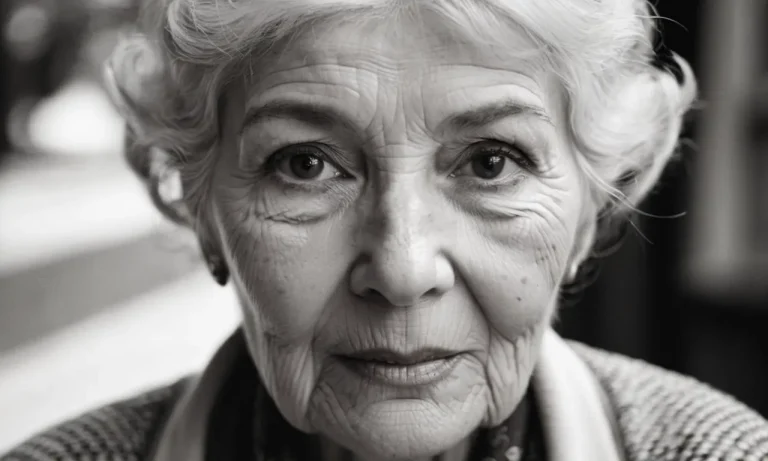Red eye is a common phenomenon in photos where a person’s eyes appear red or orange. This effect is caused by light reflecting off the blood vessels at the back of the eyes. Although some attribute spiritual meanings to red eyes, scientific evidence points to anatomical and optical causes.
What Causes Red Eye
The Anatomy of the Eye
The eye is an incredibly complex organ made up of various structures that work together to enable vision. The eye contains a lens, cornea, retina, iris and pupil. The lens focuses light onto the retina, which contains photoreceptor cells that convert light into signals sent to the brain.
Surrounding the colored iris is the pupil, which can dilate to allow more or less light into the eye as needed. The iris gives our eyes their unique coloring and patterns.
How Light Enters the Eye
Light first passes through the clear cornea and lens. These structures focus and bend light before it reaches the retina in the back of the eye. The retina contains blood vessels that supply oxygen and nutrients.
These blood vessels are tiny capillaries and exist in a partially transparent web across the retina. Most of the time our brains tune them out, but they can cause issues when exposed to bright light sources.
Light Reflecting Off Retina Blood Vessels
When exposed to the bright flash of a camera, the pupil rapidly widens to let in more light. This allows the blood vessels on the retina to be exposed as well. The camera flash bounces off these tiny red blood vessels, resulting in that spooky red-eye effect!
The eerie red glow in photography happens because blood in retinal vessels absorbs all other colors of light except shades of red. So only a glowing crimson reflection comes bouncing back through the pupil opening.
Red eye is more prominent in people and animals that have light-colored irises, such as blue or green eyes. Dark brown irises can help prevent red eye by partially blocking the reflection of light. But bright flashes can still cause issues no matter one’s eye color.
Dilated pupils from low-light conditions, alcohol or medications can also make red eye worse in photos.
Next time someone complains of glowing demon eyes in a group photo, let them know it’s just science at work. The retina’s blood vessels combined with shiny flashes are the real culprit. And don’t worry, contrary to legends…red eye won’t actually steal your soul!
Risk Factors for Red Eye
Using a Flash Up Close
One of the most common causes of red eye is having a camera flash that is located too close to the lens. When the flash fires, the light reflects directly back from the blood vessels in the retina, causing the eyes to look red or orange in photos.
Generally, the closer the flash is to the lens, the higher the chance of redeye.
Many modern cameras and smartphones have redeye reduction features that cause the pupil to contract before the photo is taken. However, these features don’t always work perfectly, especially when shooting in dim lighting or when the flash is very close to the lens as is common on smartphones and point-and-shoot cameras.
Low Ambient Light Conditions
Low lighting also increases the chances of redeye in photos. In dim conditions, the iris opens the pupil wider to allow more light into the eye. This provides a larger surface for the flash to reflect back from, causing more pronounced redeye.
This is why redeye tends to show up more often in photos taken indoors or at night. Even with redeye removal tools, low light makes redeye more difficult to avoid.
Pupil Dilation
Dilated pupils are another contributor to red eye. Emotions, attractions, drugs, medications, and medical conditions can all cause pupil dilation, which allows more light into the eye and increases the likelihood of redeye.
For example, photos taken at weddings, birthday parties, bars, and other events with dancing, drinking, laughter, excitement, and attraction can often result in pronounces pupillary dilation and redeye even with the flash turned off due to the ambient lighting.
The same effect occurs when photographs are taken after consuming alcohol or certain medications and drugs.
| Condition | Effect on Pupils | Redeye Risk |
|---|---|---|
| Darkness | Dilated pupils to allow in more light | Higher risk |
| Attraction/arousal | Dilated pupils as an autonomic response | Higher risk |
| Intoxication | Alcohol/drugs cause pupil dilation | Higher risk |
| Medications | Side effects of some medication | Higher risk |
Preventing and Treating Red Eye
Adjust Camera Flash Position
One of the best ways to avoid red eye is to adjust where the flash is positioned in relation to the camera lens. The reason red eye occurs is because the light from the flash reflects off the blood vessels at the back of the eye. This gives the eyes an unnatural glow that shows up red in photos.
By slightly angling the flash farther from the lens, the light will reflect at an angle and not directly back into the camera.
Most built-in flashes can be pulled up or tilted to help prevent red eye. Even a slight adjustment can make a difference. Additionally, some cameras have a special red eye reduction mode that fires a brief pre-flash before taking the picture to constrict the subject’s pupils, minimizing the red eye effect.
Add More Ambient Light
Another preventative measure is adding more ambient light, so the camera flash doesn’t have to work as hard. Try taking photos near lamps, lights, windows, or reflectors. The more overall light, the less the camera has to rely on just the flash.
You can also have the photo subject look at a bright light for a few seconds before snapping the picture. This causes their pupils to contract right before the photo, again reducing the chances of red eye.
Use Red Eye Reduction Modes
As mentioned briefly for built-in flashes, many digital cameras have red eye reduction or anti-red eye settings. These work by emitting a preliminary flash before the actual flash that makes the photograph.
This causes the pupil to close down in size before the picture is taken, reducing red eye significantly.
Using a camera’s red eye reduction mode doesn’t always completely prevent red eyes, but it can make a noticeable difference. Just make sure to actively turn on the setting, as it’s usually not enabled by default.
Try Red Eye Removal Software
If preventative options don’t work and red eye still occurs in photos, try using red eye removal software. Most image editing applications like Adobe Photoshop have quick fixes to eliminate red eyes.
The software works by analyzing the eyes and then darkening the pupils and iris area to a more natural shade. The process only takes a few clicks and can be batch applied to multiple photos at once.
| Method | Effectiveness |
|---|---|
| Camera Flash Position | Very Effective |
| Add Ambient Light | Moderately Effective |
| Red Eye Reduction Mode | Somewhat Effective |
| Red Eye Removal Software | Extremely Effective |
As shown in the table, adjusting camera flash position ranks as the most effective physical preventative measure for red eye, while software removal is extremely effective at treating any red eyes after the photo is taken.
Using a combination of prevention before taking the picture and software for an extra level of correction produces the best overall results.
Conclusion
While spiritual meanings could be appealing explanations, red eyes have anatomical and optical causes that are understood scientifically. By making small adjustments to lighting and camera settings, red eye can often be prevented or reduced.






